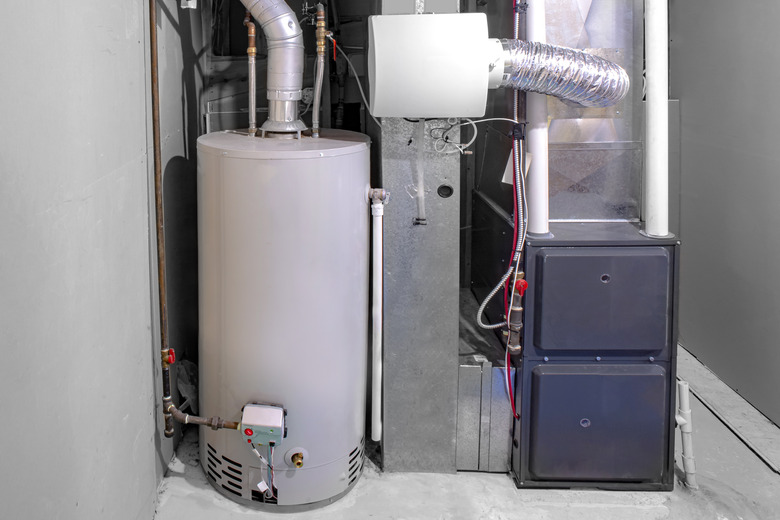What Does 'Lock Out' Mean On A Furnace?
We may receive a commission on purchases made from links.
Modern gas- or oil-fired furnaces have several safety sensors that keep track of furnace operation. The furnace controller monitors these sensors constantly. If one of the sensors reports an unsafe condition, the furnace controller shuts off fuel and power to prevent unsafe operation. This condition is known as lockout. Your furnace will normally remain in the locked-out state until you manually reset it. Most furnace lockouts are caused by problems with igniters, flame sensors, and limit switches and can be prevented with proper furnace maintenance.
Common causes of furnace lockouts are a defective igniter or defective flame sensor. When the furnace attempts to start, sensors check for igniter action and the presence of flame. If the igniter doesn't activate within a few seconds, the furnace controller stops the ignition sequence. In most furnace models, the controller will retry the ignition sequence twice more before going into lockout.
You may not always realize your furnace has gone into lockout mode. This is a common error. Homeowners may try repeatedly to get the furnace going, and what's actually happening is that by repeatedly trying to restart the furnace, you're actually causing it to lock out.
Tip
Modern gas- and oil-fired furnaces have safety sensors that monitor furnace operation. If one of these sensors detects an unsafe condition, the furnace controller shuts off fuel and power to the unit to prevent unsafe operation, which is known as a lockout.
Absence of Flame
Absence of Flame
If the igniter does activate but the flame sensor doesn't report the presence of flame within a few seconds, the furnace stops the ignition sequence. It will try twice more for ignition but if the flame sensor doesn't report flame, the furnace goes into lockout.
This may happen because the flame sensor isn't working or it may be dirty. Gas furnaces with pilot lights will go into lockout if the pilot light goes out or if it fails to light up the main burner.
Closed Limit Switch
Closed Limit Switch
Furnaces also include limit switches that monitor fuel pressure and the internal temperature of the heat exchanger. If fuel pressure is too low or if the temperature in the heat exchanger is too high, the switch closes. This tells the furnace to shut down and go into lockout mode.
Sometimes a dirty air filter can reduce air flow through the furnace to a point where the heat exchanger limit switch trips. Many newer furnaces with electronic controls have status code lights that can tell you what caused the furnace to lock out.
Resetting Your Furnace
Resetting Your Furnace
Once you have identified and corrected the cause of your furnace lockout, you must manually reset the furnace. Most gas furnaces can be reset by shutting off the electric power, waiting 20 seconds and turning the power back on. Some furnace controllers will unlock after an hour or two and will try to operate again.
Most oil-burning furnaces have a reset button on the burner that you press to restart the furnace. If your gas furnace has a pilot light, you must relight it according to the manufacturer's directions. This should unlock the furnace.
Preventing Furnace Lockouts
Preventing Furnace Lockouts
There are some things you can do to prevent most lockouts, including regular furnace maintenance. You should regularly clean or replace your igniter and flame sensor, clean or change your air filter, and make sure your vent pipe is clean and not obstructed by debris.
